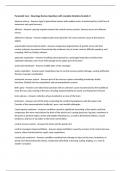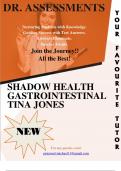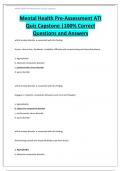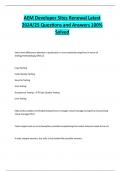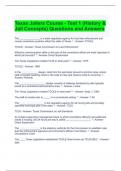Exam (elaborations)
Paramedic Care - Neurology Review Questions with complete Solutions Graded A+
- Course
- Institution
Paramedic Care - Neurology Review Questions with complete Solutions Graded A+ absence seizure - Answers type of generalized seizure with sudden onset, characterized by a brief loss of awareness and rapid recovery afferent - Answers carrying impulses toward the central nervous system. Sensory nerv...
[Show more]
